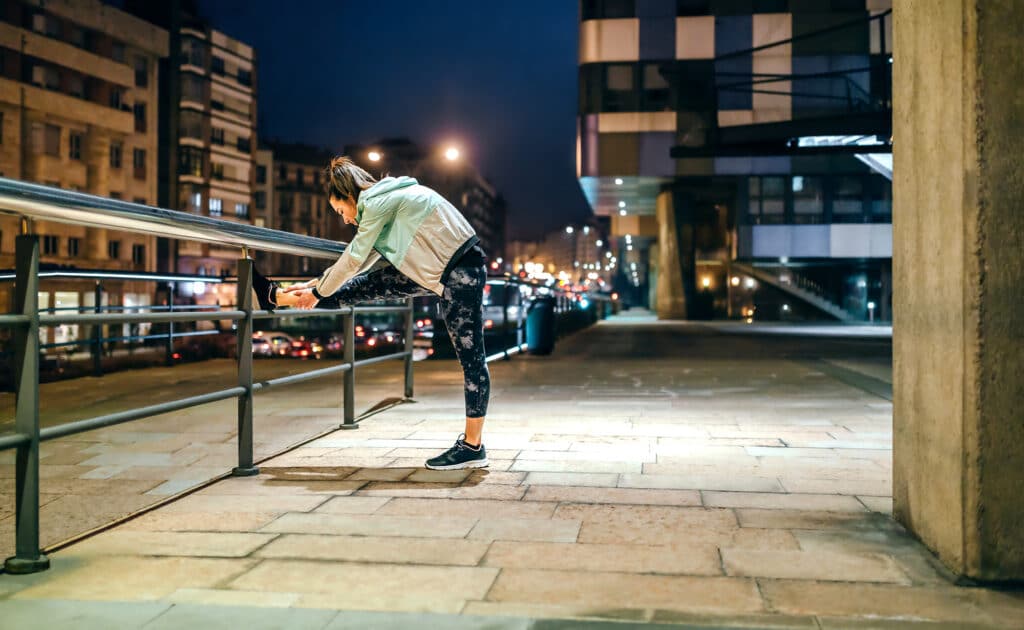
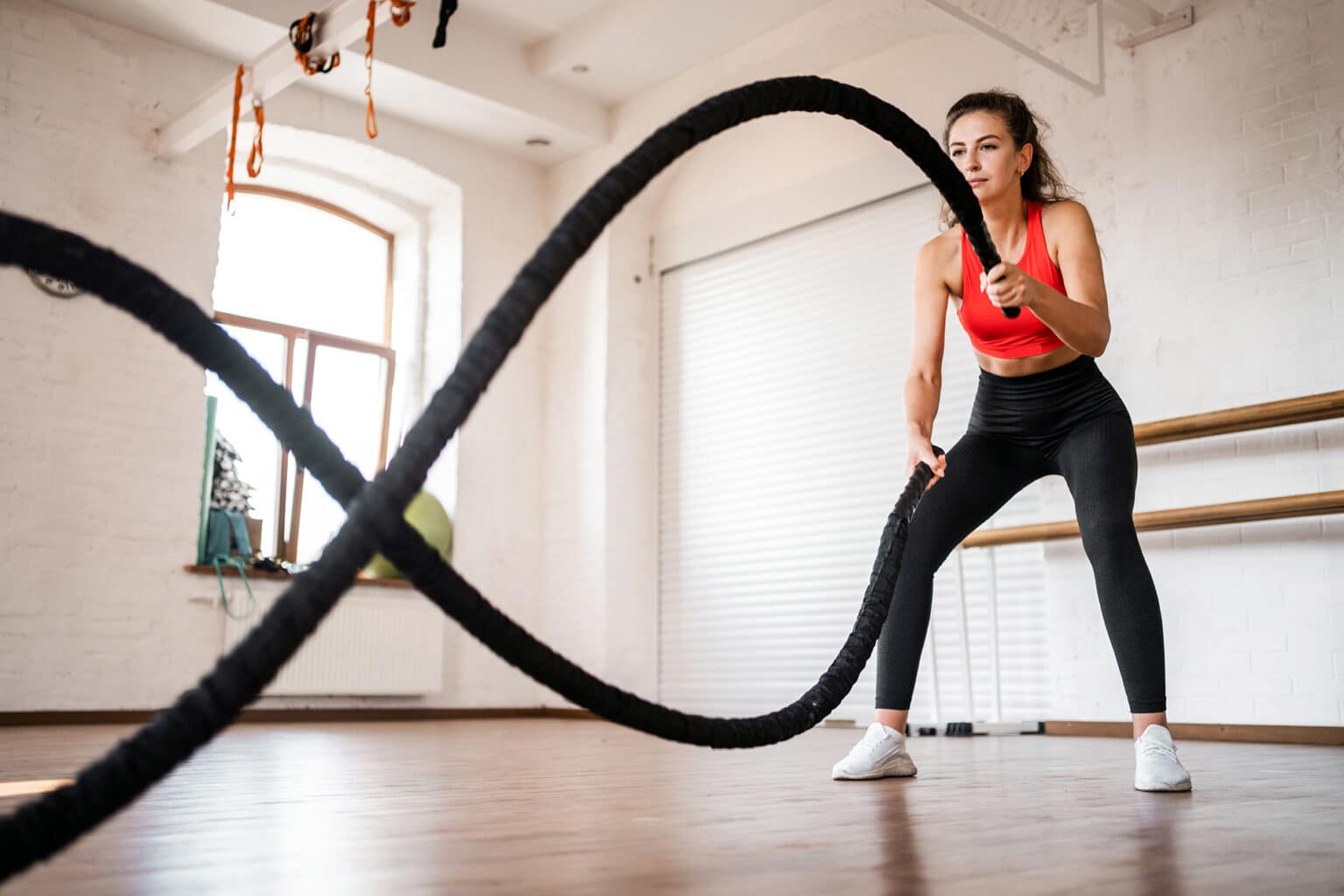
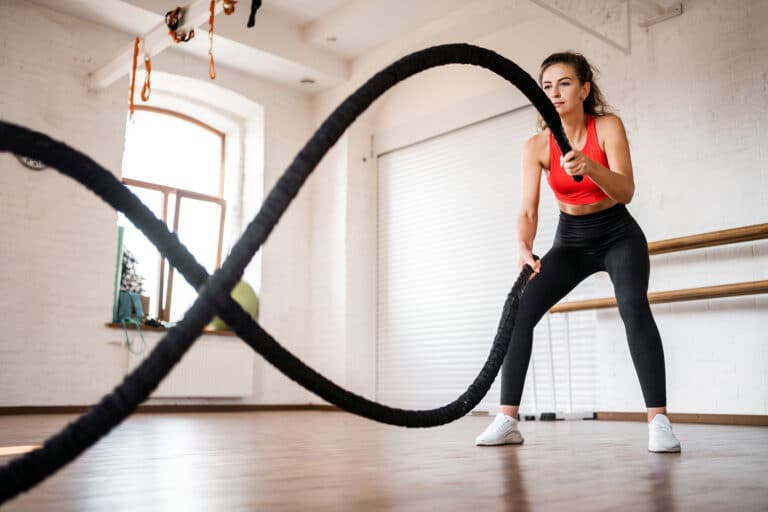
Well, yes and no. That is, I did it, and that I know lots of marathon runners who do/did very little strength and conditioning training.
Running is still the key ingredient to becoming a better runner.
There is no disputing that most of your improvement as a distance runner will come from a balanced diet of long steady running, plus interval type running, that will build your ability to utilise oxygen to maximum amounts. This is development of thresholds while pushing up various lactate levels, and running efficiency.
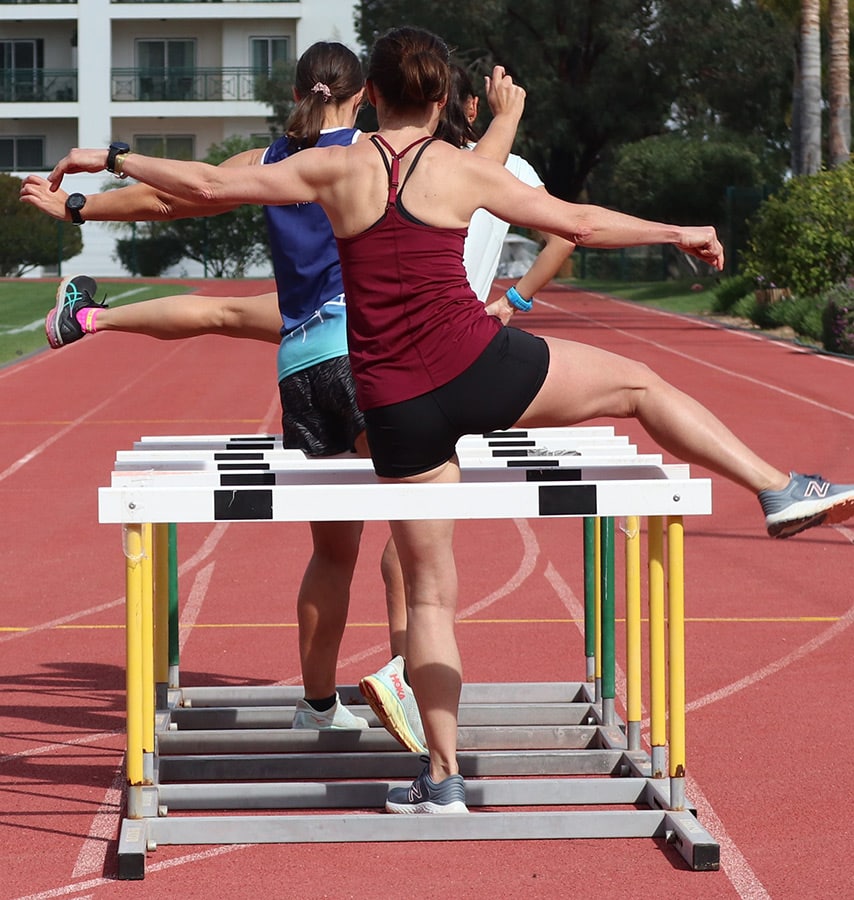
The efficient use of oxygen is the main indicator of ability – your VO2 Max. Faster runners will generally have the highest VO2 Max. VO2 Max is largely set genetically, but using as much of your VO2 Max potential as possible, is trainable, and you may not achieve this by long slow aerobic work alone.
Usually, some form of speed work is used to develop VO2 Max. That is, improving the percentage of your VO2 Max that you utilise. A runner might be said to be able to run at 60% of their VO2Max. To improve this and become more efficient, interval work at your VO2 Max speed, which is considered the speed you can maintain for 10mins, is useful. Intervals such as 10 x 400m with 90sec recoveries @ VO2 Max speed are a typical session. Tempo runs at race pace for 20 mins or so are also a good way of improving VO2 Max percentage.
This, most coaches will know, and athletes will prioritise running at various speeds as the obvious way to improve.
I have always been a believer in resistance training. When I joined my first running club, Folkestone AC, as a 15-year-old, the club coach at that time had access to an army gym at Shorncliffe Barracks. Once a week, we would go into the gym to do a circuit session. This would include rope climbing, pull ups on a beam, knees-to-chest while hanging from a wall bar, stride jumps on a bench, pressing up one end of a bench with the other end attached to wall bars, etc.
This was classic circuit training stuff. As I got older, and having access to the gym as my father was in the army stationed on the barracks, I added a session of resistance training with weights. Deadlifts, cleans, bench press, etc.
At the time I was training for the 800m and 1,500m, and although I later moved up to 5,000m in my last year at school, and dabbled in some road races, I had the strength training habit, that I still have today more than 55 years later.
What did I think were the benefits?
At the time I didn’t really think of the benefits, it just felt like it was doing me good. As I moved up distances, I still felt that I had speed in my locker, in fact, even when I had turned to the marathon and run 2:09, I would turn out for my club, Invicta East Kent, in a Southern League and run 800, 1,500m and a leg of the 4x400m. The times could be predictable at 1.55, 3.55, and 51 sec for the 400m leg.
Once I did a 14.30-ish 5,000m, and was walking back to the start line to be told that the club had no one for the B-string 200m, so, as I still had my spikes on, I switched my race number to the clubs B-string number, crouched in the blocks, which I had never done before, and ran 23.5sec for the 200m ( I own up to being last but gaining at the finish, as I recovered from ’stumbling’ out of the blocks!
I think strength training helped me to keep that reserve of speed while I was training to run 26 consecutive sub-5min miles in a marathon.
I now know that my strength training helped me recruit more muscle fibres when I was running fast. It made me more efficient.
I also never got injured – at least not an injury that came from training or racing.
On leaving college I worked as a labourer on a building site in Dover for a short time, to earn some pocket money before getting a teaching job. While working on the site, my left foot got run over by a dumper truck and I suffered 5 breaks in three metatarsals. I was out from running for 6 months, from July 1978 but maintained weight training. This was from as soon as I could stand on my foot, after about 4 weeks, during rehab in Buckland Hospital, Dover.
The result was, despite not running, I started to race at a high level very quickly. In March 1979, just 9 months from the broken foot incident, I finished about 140th in the National Cross-Country Championships. A couple of weeks later, I ran 10 miles in 51 mins in the Tonbridge 10. My new club, Invicta were heading to Paris to run the Essonne Marathon in April. I was going along for the social, but my long-time training partner, Len Slater, persuaded be to get an entry.
So, I did. I ran 2.21.30 for my first marathon on 4 months run training. The rest is history.
I am sure weight training was a big part in recovery from injury, it also made me more efficient, and from my 400m speed, showed I could put more force through each stride. I became a very rhythmic runner, very co-ordinated, which when added to my naturally very efficient low knee lift, helped me churn out mile-after-mile at a high pace.
It is true to say, if you lift a lot of weight in the gym you are inclined to put on body weight through muscle mass, and extra weight affects your VO2Max in a negative way.
Although many exercises used by body builders are the same as we may be use as runners, the emphasis is different.
The body builder is likely to work hard on one muscle in isolation, in an attempt to grow the size of the muscle.
The runner will be looking much more at strength through movement; this promotes neuromuscular development, control of the movement and recruitment of more muscle fibres in the movement.
By doing sets of exercises at a moderate resistance/weight, through a full range of movement, the key areas of strength for runners can be achieved without substantial muscle mass gain.
Typically, an endurance runner would do 3 sets x (8 to 12) of an exercise, lifting about 7 out of 10 on perceived effort. At the end it is recommended that you should feel that you could do two more but not more than that.
One thing that was said about me, was that I had ‘legs of steel’. That was true in the 1980’s when I could run fast marathons, and is still true now in my late 60’s. My legs do look very strong, and even if I say so myself, they are. But they are not carrying bulky muscle.
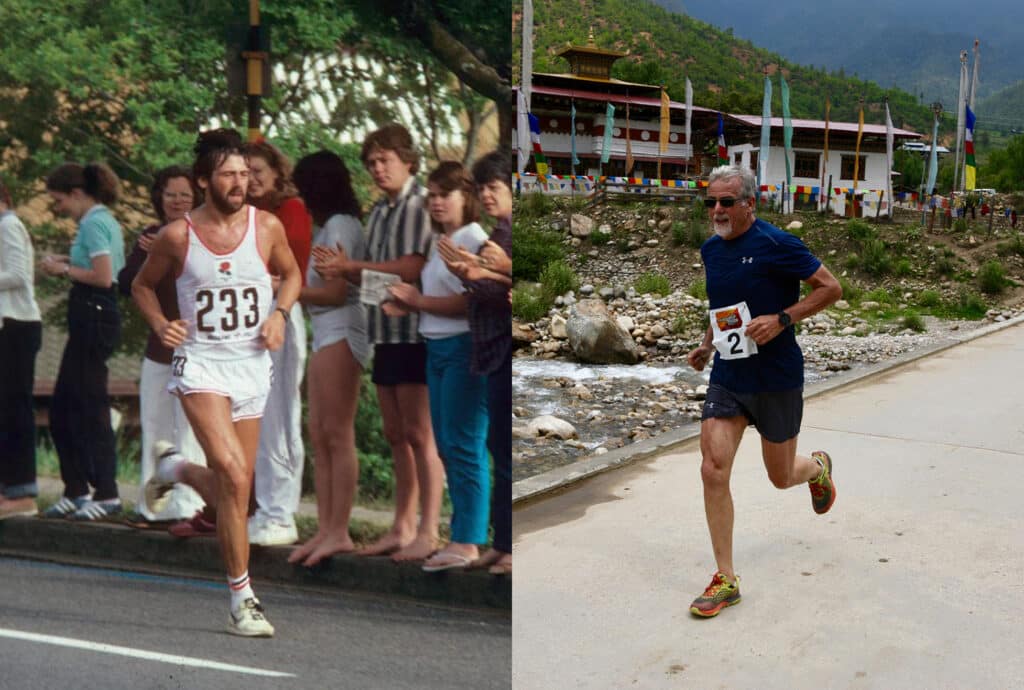
That’s an endless question – there are thousands of exercises you could choose. I generally split things into three sessions; drills, perhaps as part of a track warm up, strength, sets moving weight by dumbbell or Technogym type equipment, and conditioning, using your core to build body stability.
You can make things specific to running, easy to do with drills, but you don’t have to mimic running in many other exercises – particularly weight training when two feet on the floor gives you stability.
My brain stopped sending messages to my Legs!
Just to give an idea of the need to cover various bases, particularly the neuromuscular, I recently had a back strain that prevented a lot of movement, but I could lift weights and do some core work. However, I found it difficult to do some balance work as that hurt the back.
I had booked to go to the Australian Outback Marathon, couldn’t run it due to my back injury but travelled anyway. On the way home I booked a stop-over in Hong Kong. It was at the time of the riots and as I wondered around with my camera one day, at the end of a street you could see a stand-off between police and protesters.
Thinking it would be a good picture to capture, I jumped on to a bench to get a good view, only to be told by a policeman to get down. I promptly did, jumped down and collapsed on the floor, not because my legs couldn’t support me but because my brain hadn’t sent a message to them. Embarrassed, I jumped to my feet and sauntered off.
Here’s a selection of exercises I regularly perform each week…
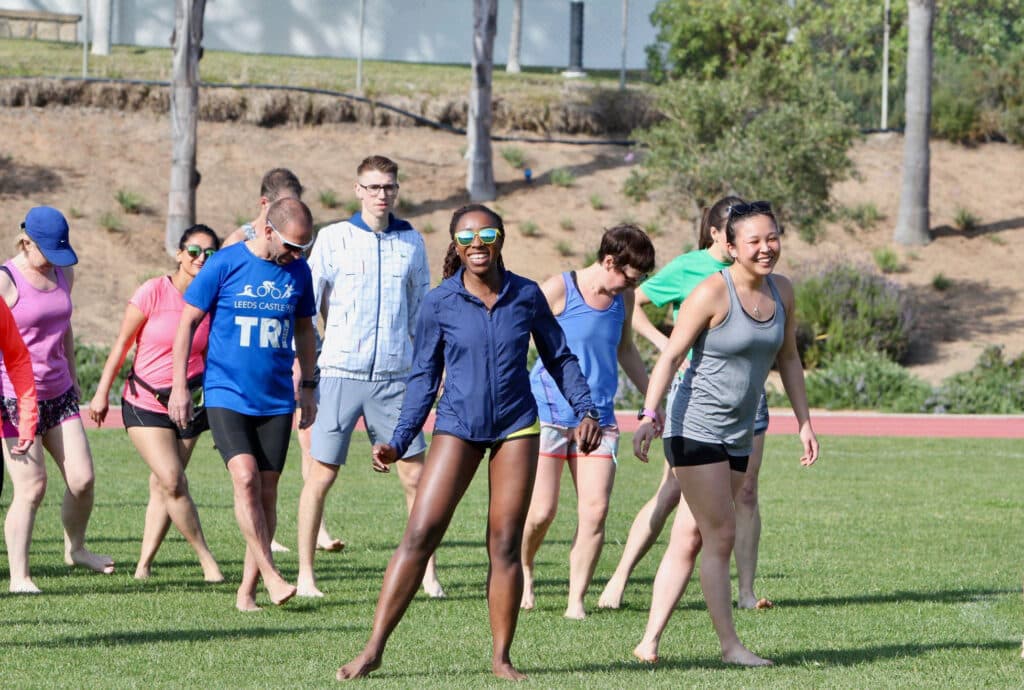
Check out our video below, demonstrated by Jack from Winchester Physio and Health, where he shows us 22 essential strength exercises for runners.
We suggest incorporating six of these exercises into a single session, prioritising form over speed for optimal results.
Join our mailing list to stay up to date with the latest UK running events, training tips, and exclusive offers on running products. Rest assured, we value your privacy and would never dream of selling your address. Sign up now…
Share this article
A 5K race is an excellent way to challenge yourself and get a great workout....
The marathon is an extremely challenging event that requires a lot of dedication and a...
Designed by our head coach, Mike Gratton, winner of the 1983 London Marathon, this 8-week...
The Boston Marathon is the world’s oldest annual marathon, hosted by several cities in Massachusetts,...
Are you ready to boost your running game this spring? Mark your calendars for the...
Kettlebells, a popular type of weight training equipment originating from Russia, consist of a cast...
We’re here to make sure you’re up-to-date with the latest running tips, events and product discounts – we’ve always got your back! Rest assured, we value your privacy and would never dream of selling your address.
BONUS: Sign up today and receive a FREE code for our Sub-4-Hour Marathon Plan